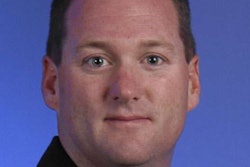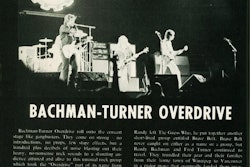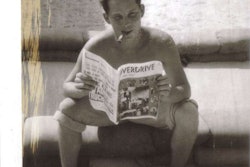Better, Not Shorter
Attention-challenged fans, TV execs and even some drivers say NASCAR’s problem is too-long races, but they are wrong
Did you watch the last NASCAR race from green flag to checkers? Didn’t think so. Television viewership is down. And seats remain available at most tracks. A TV executive says the problem is that the races are too long. NASCAR’s favorite driver agrees.
I don’t.
Before the season, Fox Sports Chairman David Hill suggested that the run time of some races be shortened. “I think the racing is far too long,” he said during Charlotte Motor Speedway’s pre-season media tour. “There is more diversion, more opportunities for stuff than any other time in man’s history.”
Dale Earnhardt Jr. brings the drivers’ perspective to the discussion. A lot of fans, surmised Earnhardt, “just don’t feel they need to watch the first 200 miles. They’re skipping that on purpose. That’s what I think.”
Sorry, guys, you’re off the mark.
True, we live in an age of ever-shorter attention spans. But people aren’t skipping NASCAR events because the races are too long — it’s because they’re too boring. NASCAR has become that sad parody of drivers just going in circles.
Shortening races wouldn’t do a thing to fix the tedium. A boring 300-mile race is just as mind-numbing as a boring 500-mile race.

Much of the blame lies with the tracks. Too many venues are almost identical, and that means the races start looking alike. So NASCAR needs to do away with duplicate races at those boring tracks and look for facilities with true variety. And when they’re stuck at those cookie-cutter D-shaped ovals, NASCAR needs to stop making their problems worse.
First, get rid of those manufactured cautions. I swear, when a race settles into monotonous circling (or Junior is about to be lapped), debris suddenly appears on the track. And of course the length of time it takes the clean-up crews to find the shard of rubber is interminable.
Don’t get me wrong. Safety can’t be sacrificed. But applying flag decisions judiciously and consistently throughout a race would speed things along.
Then there’s the other flag issue, the green-white-checker finish. This was supposed to make fans happy, giving them a “real” result. But all it’s done is cause more wrecks, thereby delaying the ending. Worse, it signals fans that nothing before the last few minutes is worth watching. When too many races come down to the last two laps, that’s all the casual fan will tune in to see.
Plus, nothing is as boring — or adds more minutes to a race’s time — as when a race is red-flagged so NASCAR can have its dramatic two-lap finish.
Please, just let the races play out. Sometimes a driver gets a trophy under yellow; a couple of times I was dang glad to see my favorite driver cross the line with the yellow and checkers flying simultaneously. Races also are won when rain shortens an event. There’s no waiting around for a green-flag finish then. Sometimes that happens. Deal with it.
And speaking of dealing with things, NASCAR’s powers-that-be need to face the fact that their micromanaging is a big reason fans are fading away.
Last year, they implicitly acknowledged they were running too tight of a ship when they encouraged the drivers to “have at it” to settle on-track disagreements. But where they really need to loosen up is with the cars, not the competitors.
I’ve never been a fan of the Car of Tomorrow — or Car of Right Now, or whatever you want to call it. Those things are plain ugly and all look alike. If you have to stamp “Impala” or “Camry” on the front in big white letters so people know which car is which, you have a problem.
NASCAR made its name on competition among the makes as well as the drivers — and it needs to go back to that so we can plainly see that the cars on track at least resemble the ones we fans drive.
The Sprint Cup is making some progress here. The rear wing was ditched and the spoiler brought back last year. This year, that hideous front splitter — what the heck was that for, anyway? — is gone, replaced by new model-specific noses. The racecars still don’t look like those on the showroom floors, but it’s a step in the right direction.
Ford Mustangs and Dodge Challengers are now running in the Nationwide Series, and Ford has submitted a Mustang prototype for the 2013 Sprint Cup season. When Chevy wakes up and adds a Camaro to that mix, I bet the fans won’t mind watching them run all day long.
Kay Bell is an Austin, Texas-based writer. When she’s not yelling at her television during NASCAR races, she blogs about taxes and other financial topics at www.dontmesswithtaxes.typepad.com.
LOOSE LUGNUTS
Save that date Next year’s Daytona 500 is already set for Feb. 26, which means the 2012 NASCAR season will start later than any in recent memory. You can thank the National Football League. The NFL’s labor turmoil prompted NASCAR to make sure it avoided any conflict with the 2012 Super Bowl, which is scheduled for Feb. 5 but could be delayed if next season doesn’t start on time or if the NFL goes to an 18-game regular season.
NASCAR hasn’t set dates for any other Speedweeks events, including the season-opening ARCA race and the Budweiser Shootout, but did eliminate the unnecessary off-week scheduled for mid-March. It’s also possible that, if the NFL season does stretch into mid-February, all the Speedweeks activities could be packed into one huge week.
These folks are serious As part of the big budget battle on Capitol Hill earlier this year, Rep. Betty McCollum of Minnesota found out just how passionate NASCAR fans can be. As a cost-cutting measure, McCollum proposed to stop the military from spending taxpayer money on racing sponsorships, such as the U.S. Army’s $7 million deal to sponsor Ryan Newman’s car in the Sprint Cup. After announcing her proposal, McCollum’s office was inundated with phone calls from upset NASCAR fans, and she even received a fax so threatening that she alerted Capitol police. McCollum withdrew her proposal, which she said was the kind of government cost-cutting the new Congress was championing. Yet, she noted, “the people who sent that message want us to spend $7 million for a sticker on a NASCAR.”
Look who’s back A familiar, but not necessarily popular, face has returned to the front ranks of open-wheel racing. Tony George has rejoined the Board of Directors of Hulman & Co., which operates both the Indianapolis Motor Speedway (IMS) and Izod IndyCar Series. George, grandson of IMS Chairman Mari Hulman George, abruptly resigned as CEO of both IMS and the IRL (now re-branded as the IndyCar Series) in 2009 after disagreements about his handling of the financially challenged IRL and IMS, which, among other things, lost its annual Formula 1 race. In a shock, the Board hired former Professional Bull Riders CEO Randy Bernard, and he led the IndyCar Series to a surprisingly positive 2010 season. It’s not yet clear exactly what George’s role will be, though he won’t have any day-to-day management duties.











